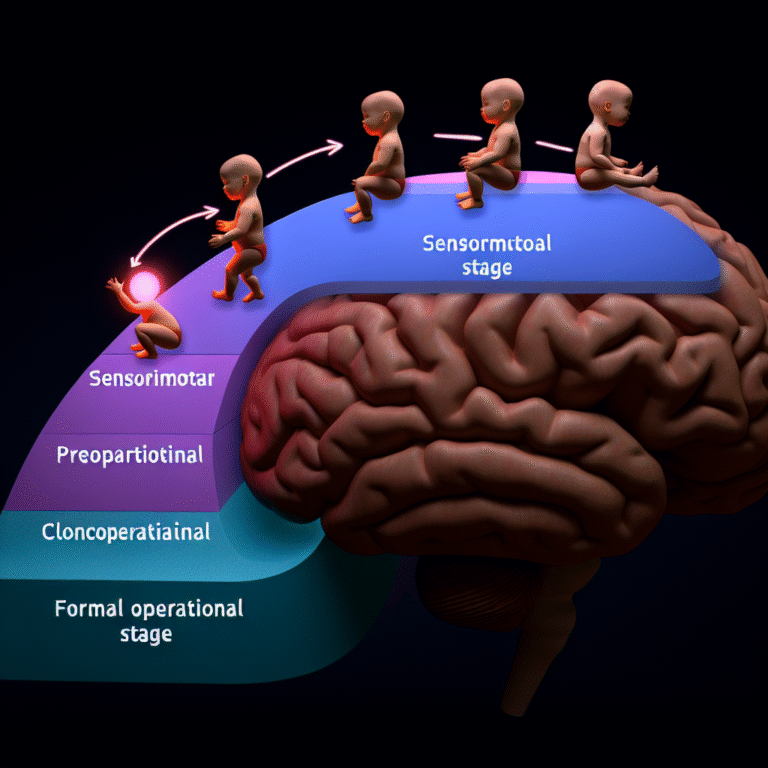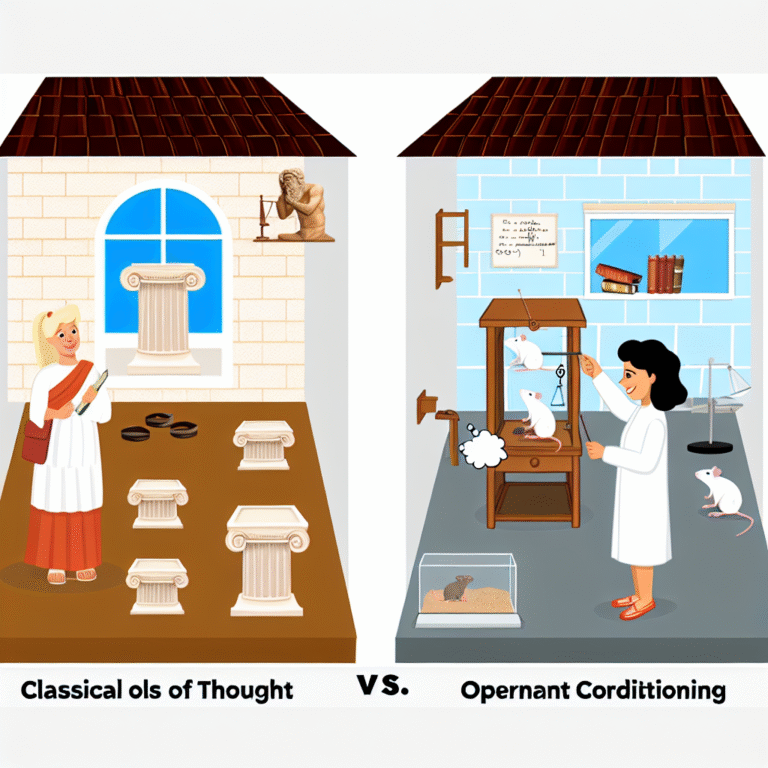
The Science of Learning: Comparing Classical and Operant Conditioning Techniques – The Ultimate Guide to Effective Learning
Introduction
Imagine walking into a classroom where students are not just passively absorbing information but actively engaging in their learning experiences. The science behind this transformative approach can often be traced back to two fundamental concepts in psychology: classical conditioning and operant conditioning. These powerful techniques serve as the backbone of many educational strategies, deeply influencing how we understand learning processes. In this comprehensive exploration, "The Science of Learning: Comparing Classical and Operant Conditioning Techniques," we will unravel the intricacies of these conditioning methods, highlighting their significance in education, behavior modification, and even everyday life.
The Foundations of Learning
Before diving into specific techniques, it’s essential to grasp the foundations of learning itself. Learning is defined as a relatively permanent change in behavior or knowledge that results from experience. At its core, learning involves associations that help us navigate our surroundings effectively. The science of learning investigates how these associations are formed and can be manipulated through various techniques, primarily classical and operant conditioning.
Classical Conditioning: The Basics
What is Classical Conditioning?
Developed by Ivan Pavlov in the early 20th century, classical conditioning is a learning process that occurs through associations between an environmental stimulus and a naturally occurring stimulus. Pavlov’s famous experiment with dogs highlighted this phenomenon: he conditioned them to salivate at the sound of a bell by repeatedly pairing the bell with the presentation of food.
Key Concepts in Classical Conditioning
- Unconditioned Stimulus (UCS): A stimulus that naturally triggers a response (e.g., food).
- Unconditioned Response (UCR): An unlearned response that occurs automatically (e.g., salivation at the sight of food).
- Conditioned Stimulus (CS): A previously neutral stimulus that, after association with UCS, triggers a conditioned response (e.g., the bell).
- Conditioned Response (CR): The learned response to the conditioned stimulus (e.g., salivation at the sound of the bell).
The Science of Learning: Comparing Classical and Operant Conditioning Techniques—A Closer Look
Now that we understand classical conditioning, let’s compare it with its counterpart, operant conditioning, to appreciate how they complement each other in the science of learning.
Operant Conditioning: Unraveling the Concepts
What is Operant Conditioning?
Introduced by B.F. Skinner, operant conditioning is a learning principle based on the idea that behaviors are influenced by their consequences. Unlike classical conditioning, which associates involuntary responses with stimuli, operant conditioning focuses on voluntary behavior and the roles that rewards and punishments play in shaping those behaviors.
Key Components of Operant Conditioning
Reinforcement: Any consequence that strengthens a behavior.
- Positive Reinforcement: Providing a reward (e.g., praise, money) after the desired behavior.
- Negative Reinforcement: Removing an aversive stimulus (e.g., taking away unpleasant chores) following the desired behavior.
- Punishment: A consequence that weakens a behavior.
- Positive Punishment: Adding an aversive consequence (e.g., extra chores) to decrease a behavior.
- Negative Punishment: Taking away a pleasant stimulus (e.g., screen time) to decrease behavior.
Real-World Applications
The science of learning extends well beyond theoretical constructs; it has profound implications in real-world scenarios. Let’s explore three case studies that illustrate the powerful effect of both conditioning techniques.
Case Study 1: Classroom Behavior Management
In a middle school classroom, a teacher employs operant conditioning techniques by reinforcing positive behavior. Students receive small rewards for completing assignments on time and participating actively in class. This approach not only improves academic performance but also fosters a more engaging classroom environment. The science of learning: comparing classical and operant conditioning techniques shows that students who are consistently positively reinforced are more likely to engage in desired behaviors consistently.
Analysis: This case underscores the power of operant conditioning—reinforcement plays a crucial role in cultivating a positive learning atmosphere.
Case Study 2: Phobia Treatment through Classical Conditioning
A well-documented method for phobia treatment employs classical conditioning principles. For instance, a patient with a fear of spiders underwent systematic desensitization, whereby they were gradually exposed to images of spiders while practicing relaxation techniques. Over time, the previously neutral stimulus (spiders) was no longer associated with fear, illustrating how classical conditioning effectively alters emotional responses.
Analysis: This case exemplifies classical conditioning’s utility in therapy, demonstrating the profound effects of learned associations on emotional responses.
Case Study 3: Animal Training
Animal trainers often utilize operant conditioning to teach new tricks to pets. Positive reinforcement is the cornerstone of this method; handlers reward their pets with treats or praise immediately after a desired behavior occurs. This strategy not only ensures faster learning but also strengthens the bond between trainer and animal.
Analysis: The practicality of operant conditioning in animal training reveals its broad applicability, highlighting the essential role of reinforcement in behavior shaping.
Comparing Techniques: A Table Summary
| Aspect | Classical Conditioning | Operant Conditioning |
|---|---|---|
| Focus | Associative learning | Behavioral outcomes and consequences |
| Learning Type | Passive (involuntary responses) | Active (voluntary responses) |
| Key Theorist | Ivan Pavlov | B.F. Skinner |
| Core Components | UCS, UCR, CS, CR | Reinforcement (positive/negative) and punishment (positive/negative) |
| Application | Phobia treatment, emotional responses | Classroom management, animal training |
Understanding the Key Differences
At first glance, classical and operant conditioning may seem similar, as both focus on learning and behavior modification. However, the fundamental difference lies in their approaches. Classical conditioning centers on the association between stimuli, while operant conditioning emphasizes the shaping of behavior through reinforcement and punishment.
Exploring the Science of Learning Through Variations and Techniques
When applying the comparative techniques of classical and operant conditioning, it’s essential to consider various strategies and adaptations suitable for different learning environments. Here are some practical tips:
Integrate Both Techniques: For maximum effectiveness, combine classical conditioning, which establishes emotional responses, with operant conditioning, which reinforces desired behaviors. For example, associating learning with a fun activity can turn a boring subject into an exciting experience.
Utilize Technology: Modern educational tools can enhance both techniques. Software that adapts to individual learning needs can reinforce concepts using operant principles while offering auditory or visual cues that invoke classical conditioning.
- Foster a Positive Environment: Creating a positive learning atmosphere is vital for both techniques to flourish. The right environment can improve engagement, making learning more rewarding and less intimidating.
Conclusion
Understanding "The Science of Learning: Comparing Classical and Operant Conditioning Techniques" offers profound insights into how we learn and teach. By studying these two foundational concepts, educators, trainers, and learners alike can better utilize techniques that lead to effective knowledge acquisition and behavior modification. From classroom management to therapy and animal training, the implications span across various fields. Armed with this knowledge, we can engage in more effective learning practices, enhancing not only our personal growth but also the success of those we guide.
FAQs
1. What are some real-life examples of classical conditioning?
- Examples include developing a fear of dogs after a bite incident or feeling hungry when hearing the sound of a dinner bell.
2. Can operant conditioning be applied to adults?
- Yes, operant conditioning is used in workplaces to promote productivity through bonuses and accolades, enhancing job performance.
3. Are there limitations to classical conditioning?
- Yes, classical conditioning primarily applies to involuntary responses and may not effectively facilitate complex behavioral changes without additional techniques.
4. How do rewards and punishments in operant conditioning impact learning?
- Rewards enhance motivation and lead to repeated behaviors, while punishments may create avoidance but can also lead to fear-based learning, which may not be as effective.
5. Can both techniques be used in tandem?
- Absolutely! Combining classical and operant conditioning can create a more holistic approach to learning, making it more engaging and effective for diverse learners.
By comprehensively understanding the influence of both classical and operant conditioning, we gain powerful tools for fostering learning and behavioral changes, paving the way for a more effective and enjoyable educational experience.
















